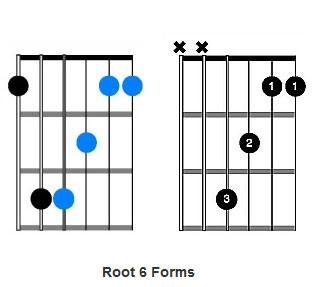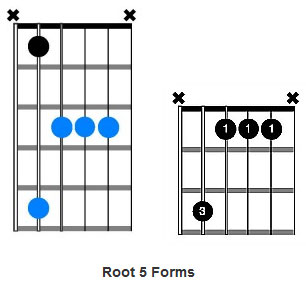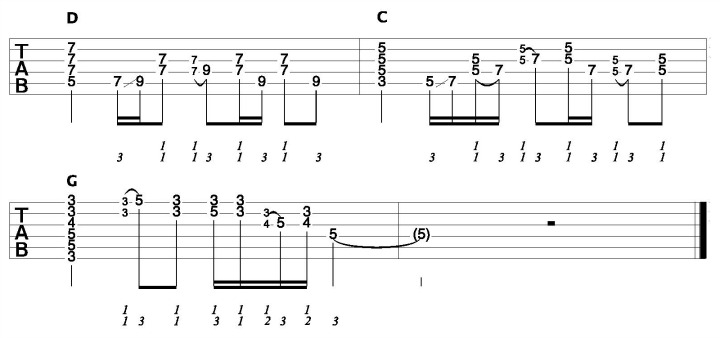Acoustic Guitar Technique - Guitar Chord Riffs
Today I would like to show you some very cool guitar chord riffs that will add a ton of interest to your rhythm playing on the acoustic guitar. These riffs will act as rhythmic fills that will weave in and out of your chord playing, and are great for filling the pockets and spaces that are left throughout a song.
These guitar chord riffs are derived from full chord shapes. Having the ability to visualize the chord shape you are going to base your chord riff around is essential to mastering this guitar technique.
There are several shapes that you can create your chord riffs on the guitar around. Below you will see the familiar Root 5 and 6 bar chord forms. I have highlighted the part of the shape from which I will base my chord riffs around and then created a separate diagram of the smaller shape you end up with.


These smaller shapes that are derived from larger forms are often referred to as chord fragments. The shape relating to the root 5 chord, for this technique isn’t really a fragment strictly speaking but an inversion of the chord. However, it will help you greatly in relating this shape, that you will create your chord riffs from, to the familiar root 5 bar chord.
So now that we have our two chord forms from which to base our chord riffs around, let’s have a look at some examples.
The first couple of guitar chord riffs are based around the shape that we derived from the root 6 bar chord form. As you can see, when we use this technique on the guitar, we apply a fair bit of ornamentation, or if you like, decoration to our notes. This comes in the form of legato techniques including slides and hammer ons, and you will find these used extensively throughout your chord riffs on the guitar.


The next three chord riffs are based off the shape that we relate to the root 5 bar chord form. Along with the legato techniques that we are applying to our riffs, you may also notice additional notes to the chord shapes being used. This is what I mean by playing around the chord shapes. We are embellishing the chord by doing this, and this plays a big part to the over all sound and effect of the guitar chord riff.



Finally, let’s combine our guitar chord riff ideas into a chord progression. This will help you to apply this guitar technique in real music and not just to a single chord. I have used the root 5 related shape for the D and C chords below, and the root 6 chord fragment for the G.

In the examples of guitar chord riffs above, you will find lots of variations derived from just two shapes. Focus on getting these into your fingers, and not only will your acoustic guitar technique improve as a result, but you will also start to be able to come up with your own variations on the spot.
For some great examples of this technique being applied check out the following songs:
- Castles Made of Sand - Jimi Hendrix
- Wind Cries Mary - Jimi Hendrix
- Lenny - Stevie Ray Vaughan
Learn the best way to get started fingerpicking with my online fingerstyle guitar lesson program